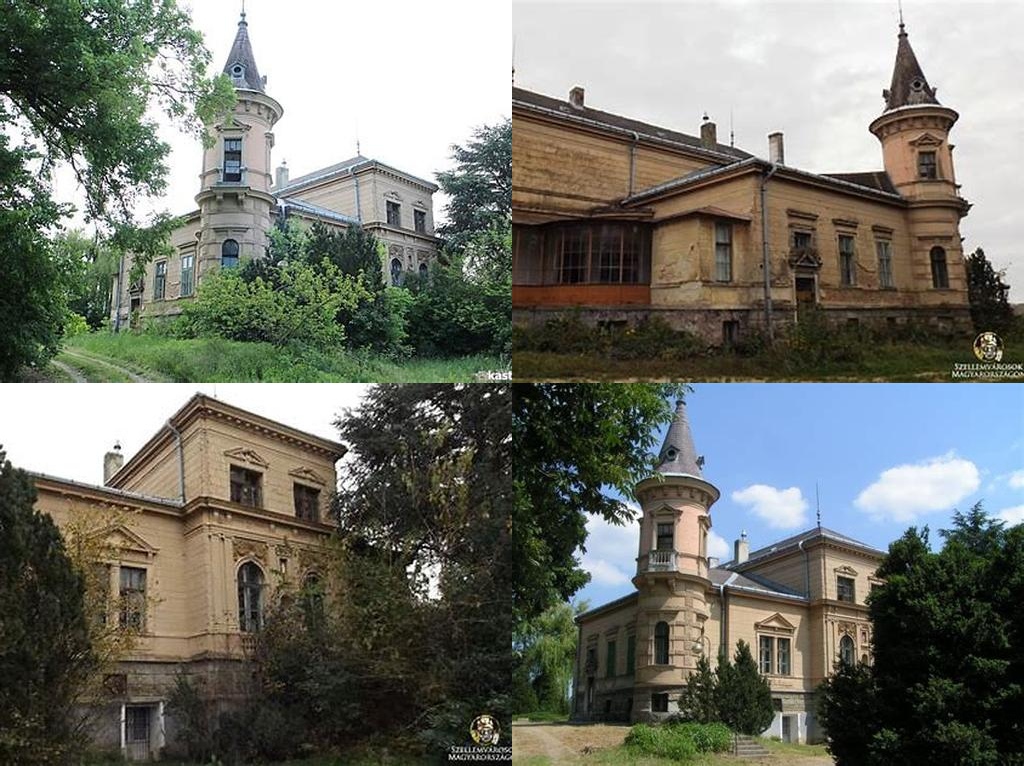
Schmidt-kastély in the village of Mád is one of those places in Hungary that seem to exist half in our world, half in the borderless realm of stories. If you get off the usual tourist trails—the bustle of Budapest or the resort towns hugging Lake Balaton—and make your way to the tokaji wine region, this old mansion awaits you with all the patient dignity of a building that’s seen generations rise and vanish. It isn’t a grandiose palace with endless gilded halls. Instead, it’s a mansion that invites you to slow down and let your mind wander through its faded corridors, reading its past in the cracks of plaster and the bend of staircases.
Mád itself is an evocative spot, ringed by vine-covered hills and suffused, when the light is right, with a golden haze that could make even a ruin look magical. The Schmidt-kastély sits quietly in this landscape, a testament to a very particular slice of Hungarian history. Its origins stretch back to the mid-18th century—a time when this area was a crossroads of cultures, wine merchants, nobles, and townsfolk. While the exact date of the manor’s construction is a matter of some historic debate, most agree that it was likely completed by the late 1700s. There’s a romance in not knowing exactly when: the uncertainty itself makes it a little more intriguing, as every new visitor can imagine their own version of the past.
The fame of the mansion’s current name comes from Antal Schmidt, a prominent landowner and industrialist who bought the property in the late 19th century. Unlike the many empty, fading mansions scattered throughout Eastern Europe, the Schmidt-kastély is a survivor of centuries of change—economic booms, wars, regime shifts, and, of course, the slow transformation of village life as the world modernized. The mansion itself, painted a soft yellow trimmed with white, is instantly evocative of old-world elegance, yet there’s a certain humility to it, too. Its symmetrical façade and classicist decorative touches are pleasingly grounded, more welcoming than intimidating.
Stepping inside the main entrance, you’re likely to feel immediately that the walls have stories to tell. There’s a sunlit staircase with worn banisters, echoing footsteps, and wide corridors with high ceilings that somehow manage to feel neither cavernous nor cramped. The echoes of past gatherings linger: you can just imagine the clinking of glasses from the days when local wine merchants and the landed gentry held court here. It’s easy to picture Antal Schmidt himself, perhaps shaking hands in a drawing room, discussing harvests, trade, or politics.
The grounds are charming in the way that only slightly wild gardens can be. Over the years, the estate’s gardens have shifted from formal order to a gentle unruliness; old trees lean over cracked paths, roses climb up leftovers of wrought-iron fencing, and you’re likely to see cats sunning themselves on stone steps. Many visitors find themselves drawn to wander here for longer than expected, feeling like they’ve slipped into a languid afternoon from a 19th-century Hungarian novel.
But Schmidt-kastély is more than just the sum of its architecture and landscape. It holds hints of the diverse communities that have left their marks on Mád—from centuries of Jewish winemakers to generations of Hungarian farmers. The mansion is only a short walk from the famous Mád Synagogue, a beautifully restored reminder of the once-vibrant Jewish population in the village. Wandering between these sites, you get a sense of how layered, and sometimes bittersweet, the history of this region is.
Visiting the mansion isn’t about ticking off a checklist of famous paintings or ornate gold leaf. It’s about being curious, poking into sunbeams slanting through windowpanes, or listening to the sound of wind in the overgrown courtyard. It’s an invitation to step out of the present, if only for a gentle afternoon, and consider all the lives—grand and humble—that have filled these rooms.
Currently, Schmidt-kastély is in the process of slow but loving revitalization. Locals and artists, history buffs and occasional tourists, work together to ensure the mansion doesn’t fade entirely into memory. Community events sometimes breathe life back into its halls: concerts that echo from the high ceilings, cultural festivals spilling out onto the lawns, or gatherings that celebrate the unique wines of the Tokaj region. There’s a palpable sense of hope here, as though the mansion’s next chapter is only beginning.
If you find yourself yearning for places that ask more questions than they answer, for corners of the world still slightly off the radar, set aside a day to visit Schmidt-kastély. Bring a picnic, a camera, and plenty of unhurried curiosity. Spend an hour or two exploring within its walls, then wander the quiet streets of Mád itself—pop into a local cellar, or sit beneath the ancient trees in the manor’s garden. Let the stories of this enchanted old house linger with you long after you’ve stepped back into the twenty-first century.





